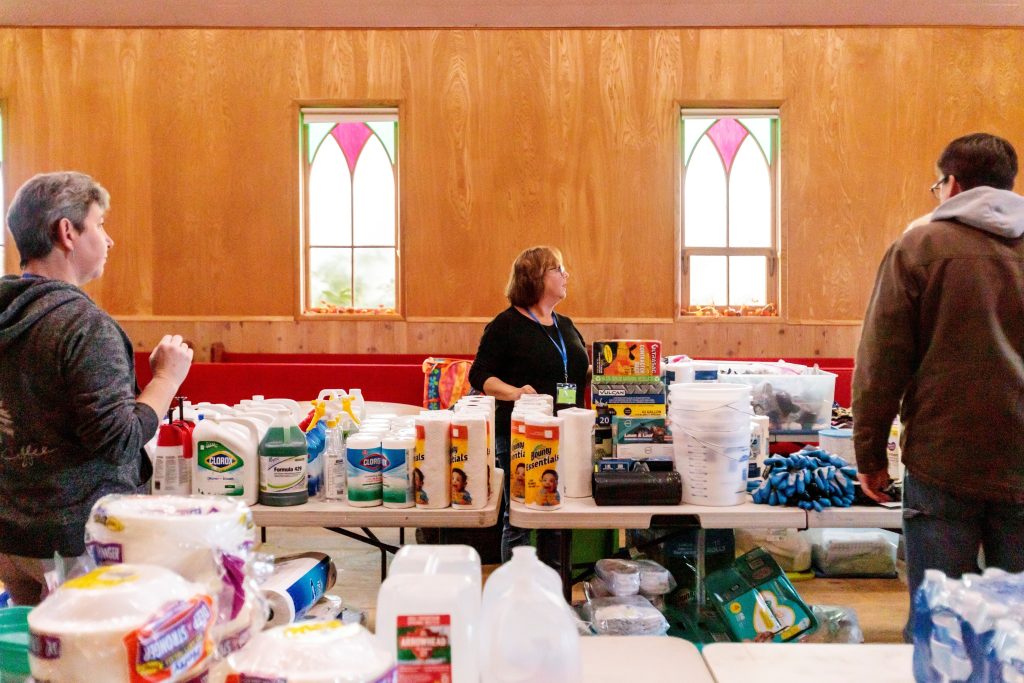 On November 15 every year National Philanthropy Day takes place – a day that signifies the importance of working together for the common good. Whatcom Community Foundation exemplifies this concept in a variety of ways, like their support of our work as a Health Care Champion Sponsor and the incredible efforts they do to support resilience every day. In this guest column, they shine a light on their work to help rebuild after the floods of 2021:
On November 15 every year National Philanthropy Day takes place – a day that signifies the importance of working together for the common good. Whatcom Community Foundation exemplifies this concept in a variety of ways, like their support of our work as a Health Care Champion Sponsor and the incredible efforts they do to support resilience every day. In this guest column, they shine a light on their work to help rebuild after the floods of 2021:
Are we a resilient community? What does that look like?
A year ago this month, Whatcom County experienced the largest natural disaster in its history. Catastrophic flooding caused by severe rainstorms killed one resident, displaced more than 500, and caused more than $150 million in confirmed damages; an elementary school was destroyed and 2,000 homes — including 80% of the those in Sumas — were damaged.
As part of the private, community-based response, we were there. And we’re here to tell you: resilience looks like community — neighbors helping neighbors, chipping in, stepping up and Macgyvering their way through troubled waters to help people reach high ground, and then doing it again and again until neighbors are not just safe but made closer to whole: physically, emotionally, financially.
Of course, resilience is also robust infrastructure, flexible resources, strong leadership, sharp communication, clear roles and established protocols. Resilience is having a plan, along with the courage and imagination to change it to meet the moment.
Above all, resilience depends on relationships, best forged during ordinary times to lean on for the extraordinary moments when community support is the difference between bending and breaking. We cannot emphasize this enough. Trusted relationships — between public, private and nonprofit leaders, among neighbors and community partners — ensure respect, speed action and allow for creative solutions.
The Community Foundation set up the Resilience Fund several years ago with the idea that it would be activated during a disaster. More than $3 million was granted to area nonprofits for COVID-19 relief. Then came the floods. As of October 2022, the Community Foundation has granted $2.6 million for flood relief and recovery. These heroic numbers are all thanks to the stunning generosity of local businesses and neighbors. Neighborliness in action – resilience.
Resilience Fund dollars initially addressed humanitarian needs, then shifted to recovery efforts including supporting the Whatcom Long Term Recovery Group (WLTRG) disaster case managers. While lasting solutions for housing, infrastructure and business recovery hinge on public funding, the WLTRG formed as a nonprofit dedicated to recovering and rebuilding following not just this, but all disasters.
Because there will be more. Experts predict heavy rainfall events — like the “atmospheric river” storms that led to flooding last year— to be more frequent and severe. Then there’s “the” earthquake or another pandemic or something else.
We’re all neighbors. County or city, red or blue; brown, black or white; rich, poor or neither: none of that matters when your house is on fire. What does resilience look like? You. And me. Us. The more we prepare and care for each other now, the better off everyone is when disaster strikes. When we strengthen relationships—across the street, across sectors and across the county— we bolster our ability to support each other equitably before, during and after a disaster or crisis. That’s what resilience looks like.
-Authored by the Whatcom Community Foundation, a Unity Care NW Health Care Champion Sponsor
Learn more about the Whatcom Community Foundation Resilience Fund here.
Learn more about becoming a Unity Care NW Health Care Champion Sponsor here.